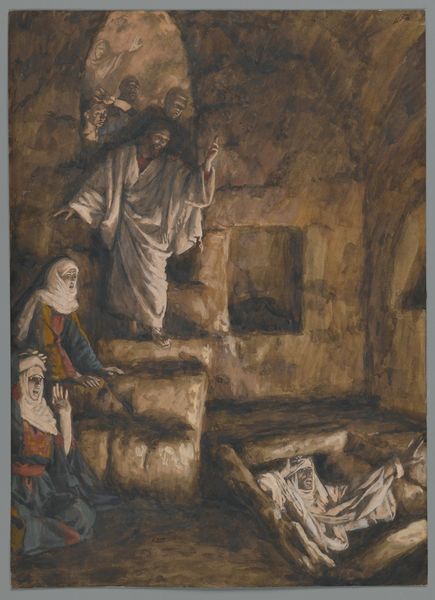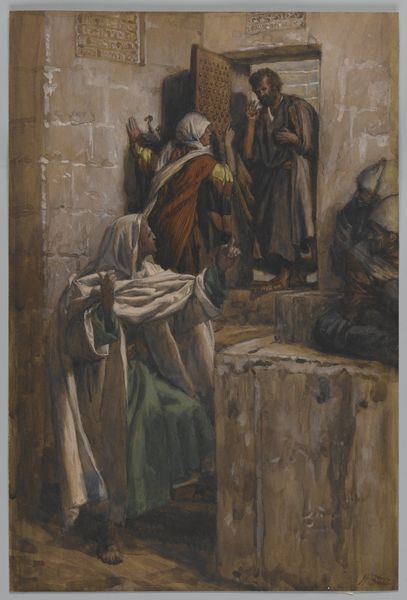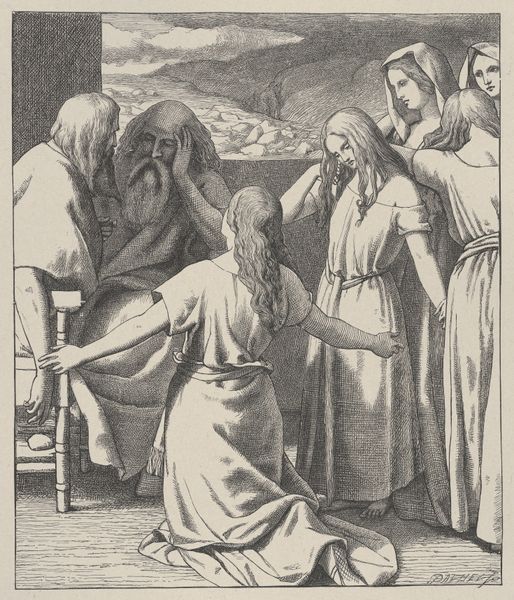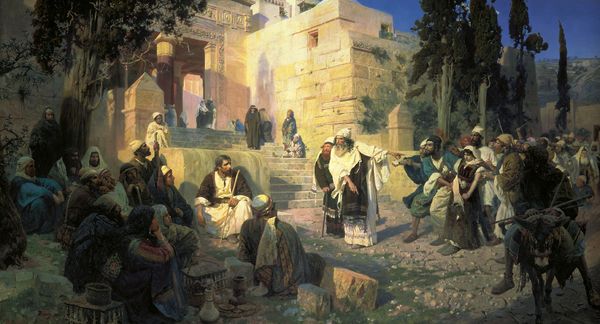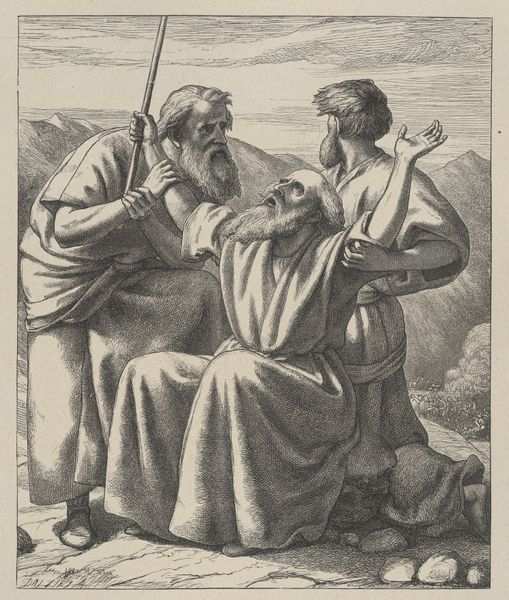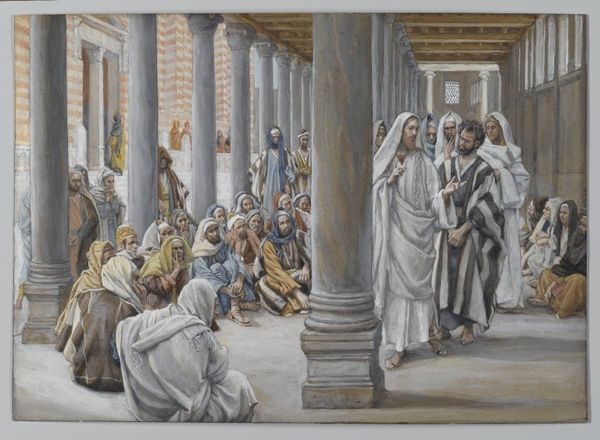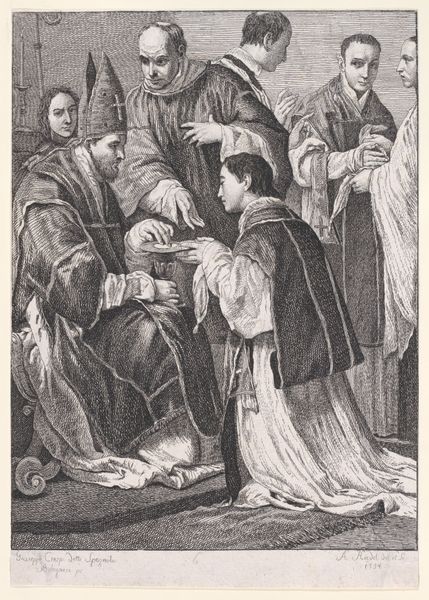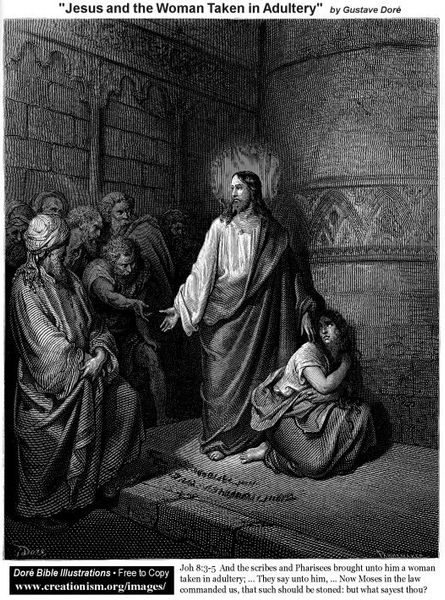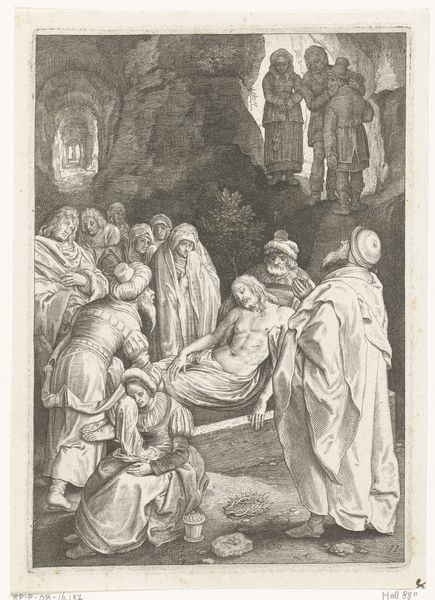
tempera, painting
#
narrative-art
#
tempera
#
painting
#
holy-places
#
oil painting
#
genre-painting
#
academic-art
Copyright: Public domain
Editor: So, here we have James Tissot’s painting, “Jesus Heals a Mute Possessed Man," done in tempera. It’s interesting how he sets it in this ordinary courtyard. It almost feels like a stage. What do you make of it? Curator: The setting, as you noted, is key. By grounding the miraculous in the everyday, Tissot asks us to consider where else we might see manifestations of the divine. That silencing finger gesture, Christ’s *hesychia*, suggests something held back, unspoken. Editor: Hesychia? Can you elaborate on that silence, its significance? Curator: Absolutely. Consider the tradition of apophatic theology – knowing God through what He is *not*. This gesture silences not only the possessed man but perhaps invites us to silence our own preconceptions, to truly "see". Why, do you think, are those two figures peering from above? Editor: Are they doubters, then? Skeptics observing from a safe distance? It makes me think of the power of belief, and how challenging it can be to accept something extraordinary. Curator: Indeed. Belief often demands a suspension of disbelief. Note also the healed man’s gesture. Hands raised in a combination of surprise and… gratitude? Tissot captures the moment just *after* the miracle, forcing us to contemplate its emotional impact. What do you imagine the psychological implications are for someone suddenly freed from such a constraint? Editor: I hadn't considered the lasting impact! I suppose the experience is overwhelming - almost disorienting. Now I see the whole scene as an exploration of faith, doubt, and the psychological realities of transformation. Curator: Precisely! Tissot offers not just a depiction, but an invitation to reflect on these ever-relevant themes. Editor: That’s a good point, thank you for this illuminating insight.
Comments
No comments
Be the first to comment and join the conversation on the ultimate creative platform.


